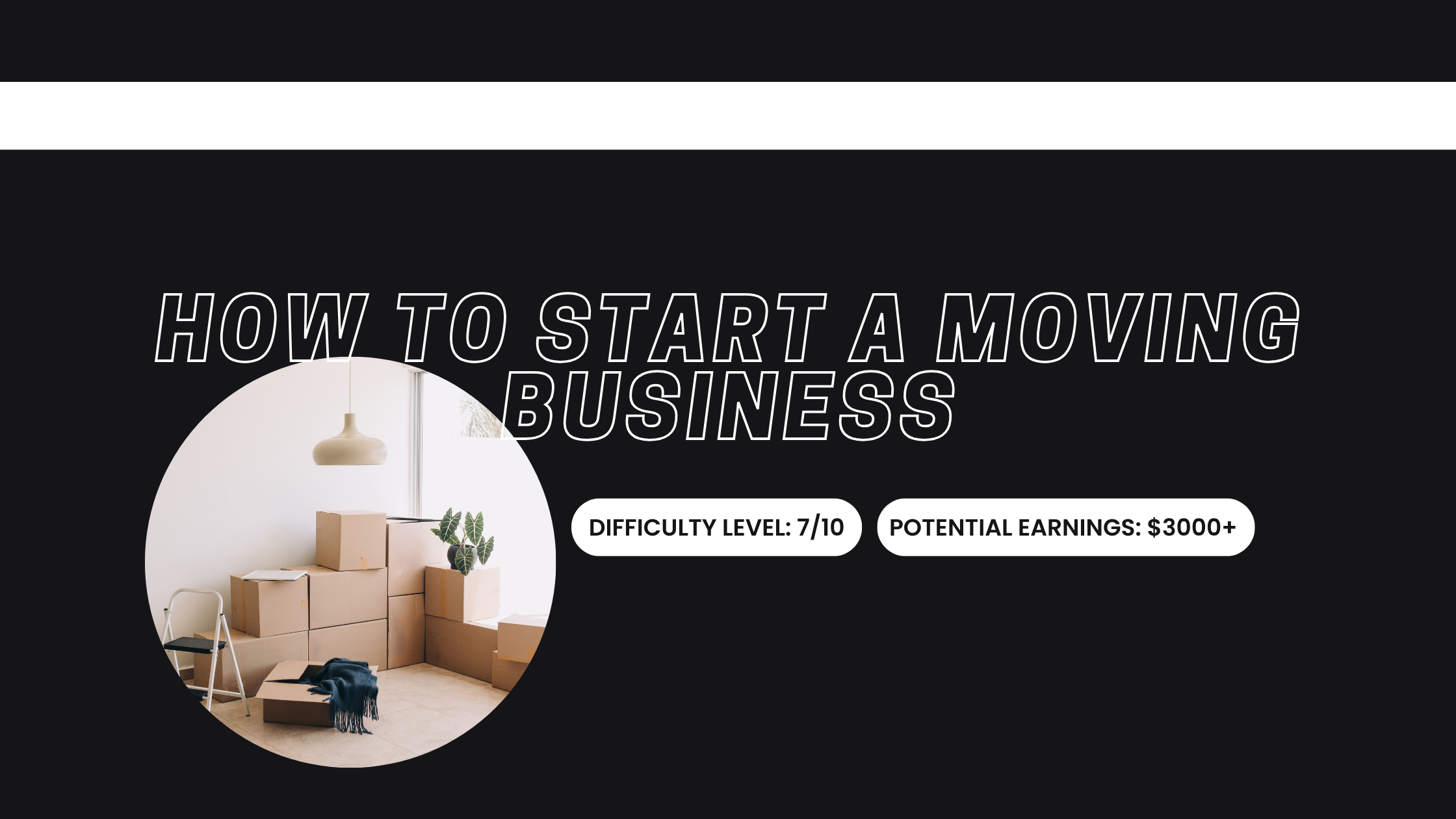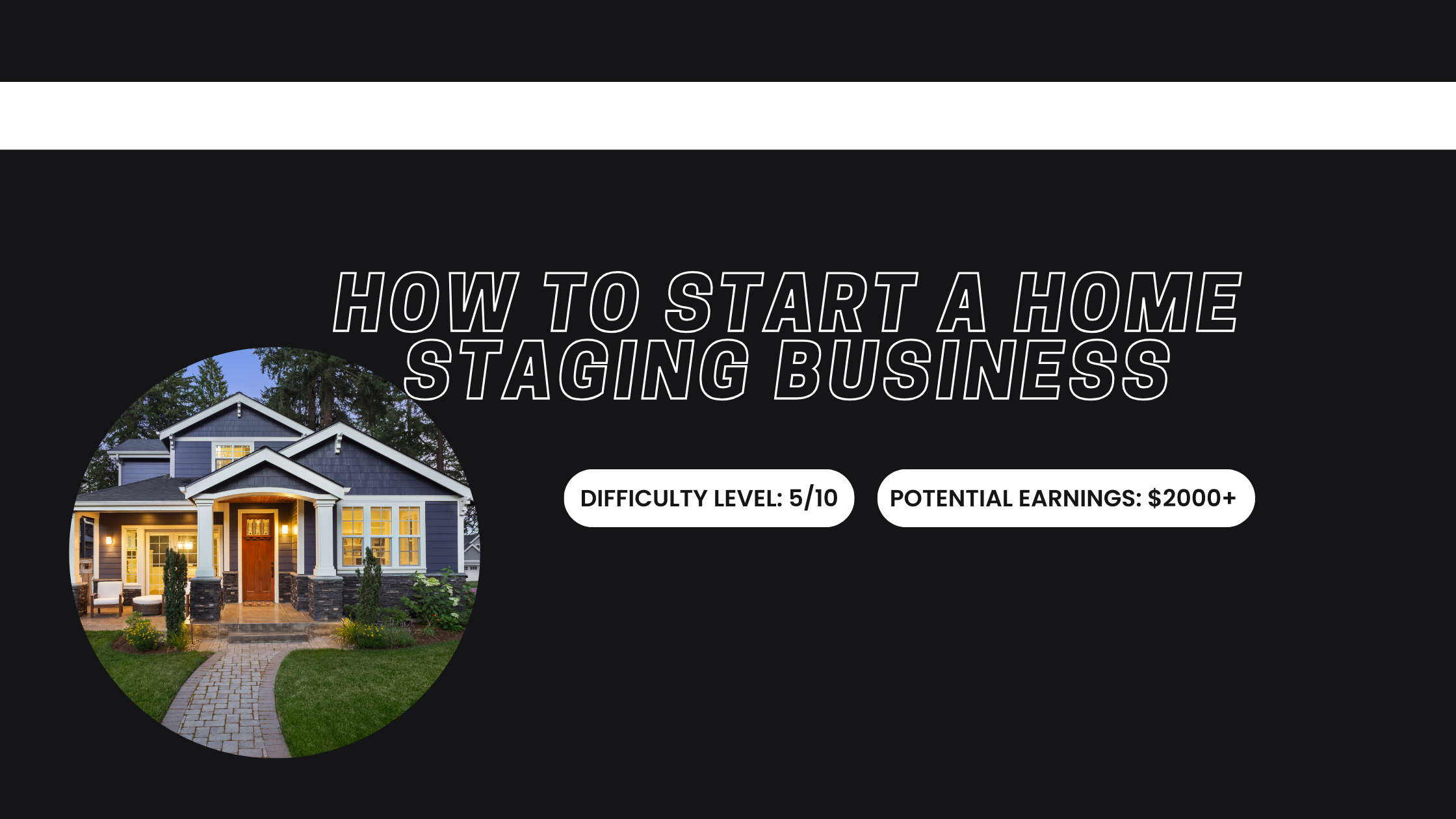How to Start a Home Staging Business
Time & Money
Difficulty: 5/10
Weekly Time Commitment: 15-20 hours
Earnings Per Month: $2,000 - $8,000 (varies by location and scale)
Is This Side Gig For Me?
Launching a home staging business is like stepping into a world where creativity meets commerce. If rearranging furniture feels like a love language to you and you’re a master of breathing life into lackluster spaces, this could be your sweet spot. It’s for the visionary who sees potential in drab spaces, the logistician who can juggle schedules like flaming batons, and the diplomat who can charm difficult homeowners and demanding realtors. But, spoiler alert: it’s no cakewalk. There’s grunt work involved—lugging couches, hunting for the perfect vase, and wrestling with timelines. Still thinking "how do you start a home staging business"? If so, read on for some practical tips on how to make this a reality.
Preparation
Start by researching the local real estate market to understand the types of properties available and buyer preferences. Take online courses or workshops in home staging or interior design to develop your skills and boost your confidence. Create a small portfolio by offering to stage friends’ or family members’ homes and capturing high-quality photos of your work. Network with local real estate agents to get insider tips and build relationships that could lead to client referrals. Plan how you’ll source furniture, whether through rentals or buying budget-friendly pieces that can be reused.
Execution
Research Your Target Market
Your target market isn’t just “people selling homes.” It’s suburban families, upscale urbanites, or even fixer-upper flippers who need help. Study the nuances of your local market like a hawk. Which buyers crave minimalist chic? Who drools over farmhouse vibes? By tailoring your style to your audience, your home staging business can become a must-have service for agents and sellers alike.
Develop a Business Plan
Treat your business plan like a map for treasure hunting. Outline everything—services, pricing, marketing tactics, and goals. Detail your startup costs, potential hurdles, and expected earnings. Bonus tip: add a rainy-day strategy for those slow months. This isn’t just busywork; it’s your guide to not getting lost in the jungle of entrepreneurship.
Assemble Your Staging Inventory
Start with versatile furniture and decor that can fit into a Victorian bungalow one day and a sleek condo the next. Neutral tones, cozy accents, and flexible pieces are your bread and butter. Larger items like beds or sofas? Rent them at first to save cash. Gradually expand your inventory until it looks like an HGTV set exploded in your warehouse.
Build Your Portfolio
Your portfolio is your siren song to potential clients. Offer discounted services or even freebies to build up a collection of drool-worthy before-and-after shots. Use natural light and clever angles to make your work pop. Don’t forget testimonials—happy clients singing your praises are worth more than any paid ad.
Create a Marketing Strategy
For home staging, your marketing game has to be as sharp as your design skills. Make a site for your portfolio/services. Stay active on social media to post tips, transformations, and a blooper reel if you want to keep it relatable. Partner with real estate agents and speak at local events about staging. With the right marketing plan, your home staging business will receive the exposure it needs.
Set Up Your Staging Workflow
Like with most business models, efficiency will be your key to success. Create a system for handling inquiries and schedule site visits and setups. Use project management tools to keep everything running smoother than a well-oiled machine. The fewer hiccups in your process, the happier your clients—and the less likely you are to lose your sanity too.
Offer Additional Services
Consider adding services like virtual staging or home organization to broaden your offerings. This can appeal to a wider range of clients and add extra revenue streams to your business. Diversifying your services helps keep your business adaptable and resilient.
Bumps In The Road
Initial Startup Costs
Furnishing your inventory and marketing your services can be costly at first. To manage this, start small by renting items or using budget-friendly pieces until you generate steady income. Keep an eye out for second-hand items in excellent condition to save money.
Inconsistent Client Demand
The real estate market can be unpredictable, leading to fluctuations in demand for staging services. Prepare by diversifying your services to include things like consultations or seasonal décor. Building strong relationships with real estate agents can also help ensure a consistent flow of clients.
Logistics and Time Management
Organizing the transport, breakdown, and setup of furniture can be both time consuming and stressful. Have a reliable team or partner on hand to assist you with the heavy lifting. In addition, create a detailed timetable and plan for each project. This will help you streamline operations and avoid stressful situations.
Conclusion
Running a home staging business is part artistry, part strategy, and part heavy lifting—literally. If you are still pondering the question, 'how do you start a home staging business?', the answer lies in your ability to combine flair with function, plan for unpredictability, and create spaces that inspire offers. So, are you ready to stage your way to success?
Continue Learning

Moving Business
Start a moving business by researching local regulations, purchasing the necessary equipment, and building a strong online presence.
